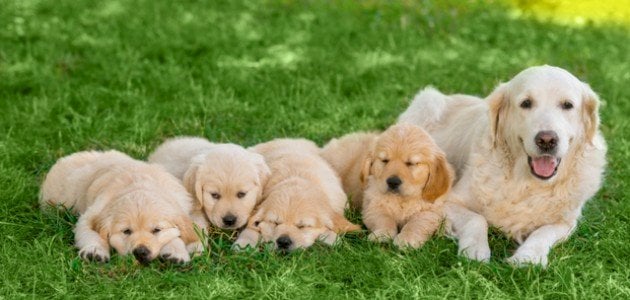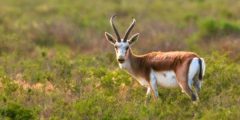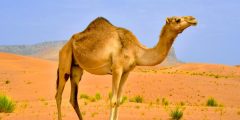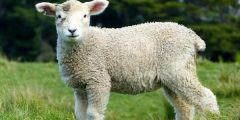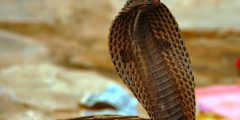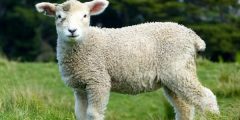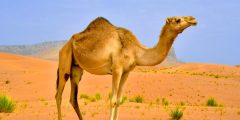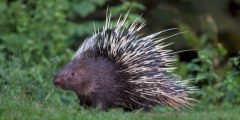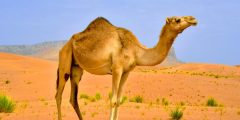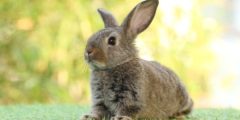Types of reproduction in animals
Through the process of reproduction, living organisms produce new individuals that are very similar to their parents who are capable of fertilization. The importance of reproduction lies in the survival of the living species and not its extinction or extinction. Reproduction in animals is divided into two main types, which are:[XNUMX]
- asexual reproduction (in English: Asexual Reproduction)
Such as the reproduction of two bacteria cells, which results in new organisms that are identical to their parents.
- sexual reproduction Sexual Reproduction)
To complete the reproductive process, genetic material, which is sperm, is needed, and the result of this mating is not 100% identical to the parents.
asexual reproduction
Asexual reproduction produces new individuals or offspring identical in genetic characteristics to the genes of the original parent. This type of reproduction occurs in archaea, unicellular microorganisms, eukaryotic multicellular organisms, and some unicellular organisms.[XNUMX]
Organisms that reproduce asexually tend to grow larger than animals that reproduce sexually; They rely on different mutations in DNA, but this results in weaknesses that are similar to all types of asexual organisms, including short lifespans.[XNUMX]
Read also:How many years does an elephant live?Fission
Fission, or what is called binary fission (in English: binary fission), is the most common method of sexual reproduction, and this process occurs by cell division into two completely identical cells, and each resulting cell has the full ability to reach the size of the mother cell, and the division process occurs by separating the cell’s chromosomes. The mother then divides to produce two cells that are identical to the mother cell.[XNUMX]
Reproduction by fission is divided into three forms: longitudinal fission, transverse fission, and oblique fission.[XNUMX] Among the animals that reproduce by fission: Prokaryotic organisms such as bacteria and some protozoa.[XNUMX]
budding
Asexual reproduction by budding refers to the ability of an organism to develop a new organism similar to the father but smaller than it. This offspring remains attached to the father or mother until it grows, matures, and separates from them. Like other types of asexual reproduction, the organism resulting from this mating is It carries the same genetic characteristics as the parent.[XNUMX]
Fungi, some bacteria, corals, flatworms, hydras, and echinoderms are among the most common types of animals that rely on budding as a means of mating.[XNUMX]
Retail
Fragmentation is defined as a pattern of asexual reproduction in animals, in which the maternal bodies divide and split into many parts, each part forming a new organism.[XNUMX]
Read also:Where does the hedgehog live?Fragmentation reproduction has been observed in environments where there is human activity and predatory processes. Examples of fragmentation reproduction include: fungi, most notably yeasts, molds, and cyanobacteria, and in annelid worms, sponges, and sea stars.[XNUMX]
parthenogenesis
Parthenogenesis, also called parthenogenesis, and this mating occurs within a female egg without external fertilization, as a sex cell develops in the female’s body that turns into a fully developed organism, and it is possible that this child will have the ability to parthenogenetic mating, or sexual reproduction. This depends on environmental conditions.[XNUMX]
It is believed that there are more than 2000 species of animals that use this type of mating, most of which are invertebrate animals such as: ants, wasps, bees, and aphids.[XNUMX]
Sexual reproduction
Sexual reproduction refers to the process of combining genetic material from two separate parents with different chromosomes to produce a new creature. Sexual reproduction includes two main processes of embryo formation: gametes and fertilization.[XNUMX]
Gamete is defined as the process of cell division to produce sex cells, and fertilization occurs through the penetration and union of both the genetic material of the male cell (sperm) and the female cell (egg) together.[XNUMX]
Sexual reproduction processes occur in humans, mammals, and some animals and plants, and the child resulting from this process does not match the parents completely as in asexual mating, but it possesses many genetic characteristics acquired from the parents, the most prominent of which are: the shape of the hand, curly hair, the shape of the tongue, and many more. Other formal and behavioral features.[XNUMX]
Read also:Small camel nounHermaphroditic reproduction
Hermaphroditism Reproduction occurs in animals that have male and female reproductive organs at the same time, and it is one of the types of sexual reproduction, in which the egg is self-fertilized by the sperm inside the body of the same hermaphrodite animal.[XNUMX]
This type of fertilization is common in animals with limited ability to move, and it is also widespread in slow-moving invertebrate animals. The most prominent animals that reproduce through hermaphroditic mating are: clams (a type of sea snail), earthworms, tapeworms, slugs, and snails.[XNUMX]
Methods of animal reproduction in terms of type of fertilization
Animals reproduce through sexual and asexual mating, but this mating (especially if it is sexual) must be through fertilization in which the egg and sperm are merged inside the body of the mother carrying the fetus. Once the fetus is fully developed, the mother gives birth to this fetus. There are two types of fertilization: Internal fertilization and external fertilization.[XNUMX]
external fertilization
External fertilization occurs outside the body of the mother carrying the embryos, and fertilization in this way is less likely. Therefore, many gametes are produced (a single sex cell ready for fertilization) until some of them succeed in the fertilization process. This fertilization is often used for aquatic and amphibious animals, the most prominent of which are: fish and algae.[XNUMX]
internal fertilization
Internal fertilization occurs inside the body of the mother carrying the embryos, and the male gametes are spread inside the female’s body by a male sexual organ. The number of male and female gametes produced in the case of internal fertilization is small; Because fertilization is very efficient.[XNUMX]
This type of fertilization is used in the mating of most animals, the most important of which are: mammals, reptiles, birds, moss plants, and foam plants.[XNUMX]
Reproduction by birth
Animals that reproduce by birth are called viviparous animals. In the mating of these animals, fertilization occurs after sexual intercourse between the father and mother. The fetus grows inside the female reproductive system, and the child is fed directly from the nutrients that enter the mother’s womb. After the fetus’s growth is complete, the mother gives birth.[XNUMX]
Mammals are among the most prominent examples of animals that reproduce by birth, such as: elephants, dogs, and cats.[XNUMX]
Reproduction by eggs
Animals that reproduce through eggs are called oviparous animals, in which fertilization occurs internally, but the growth of the fetus takes place inside the egg and externally, and after the fertilization process between the male and female and the formation of the complete egg, all of these animals lay their eggs, which later hatch and the fetus emerges into life.[XNUMX]
Many animals with sexual reproduction use the type of reproduction by eggs. For example, all birds reproduce by eggs, all fish, and amphibians, such as frogs, which lay gelatinous eggs that need to be moistened continuously. All reptiles also lay fertilized eggs, and some mammals lay eggs, such as the spiny anteater. And the platypus.[XNUMX]
In conclusion, many living organisms use both sexual and asexual mating methods, and this helps them in using the characteristics of mating, that is, they exploit the characteristics of asexual mating to provide food and shelter, and a large increase in the numbers born, but when the surrounding weather conditions change and hinder asexual reproduction, these organisms use sexual reproduction. To survive, most notably certain types of marine organisms such as starfish.
